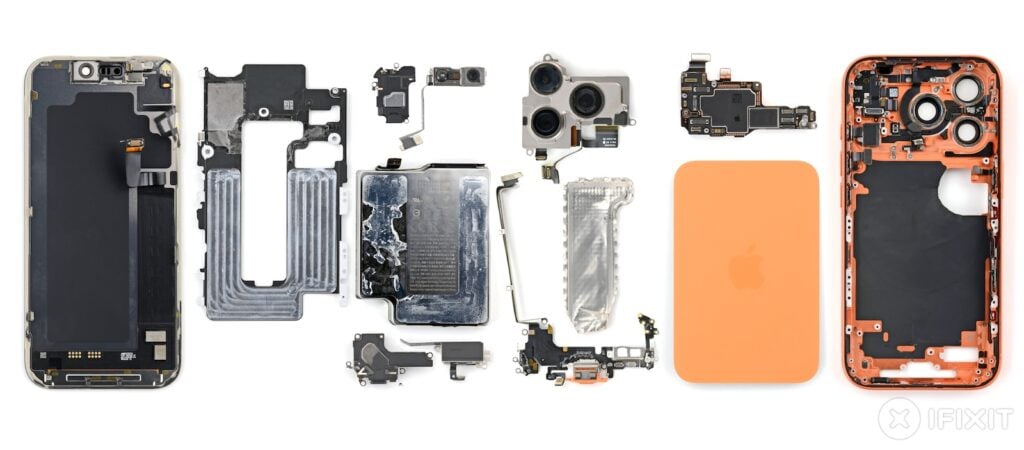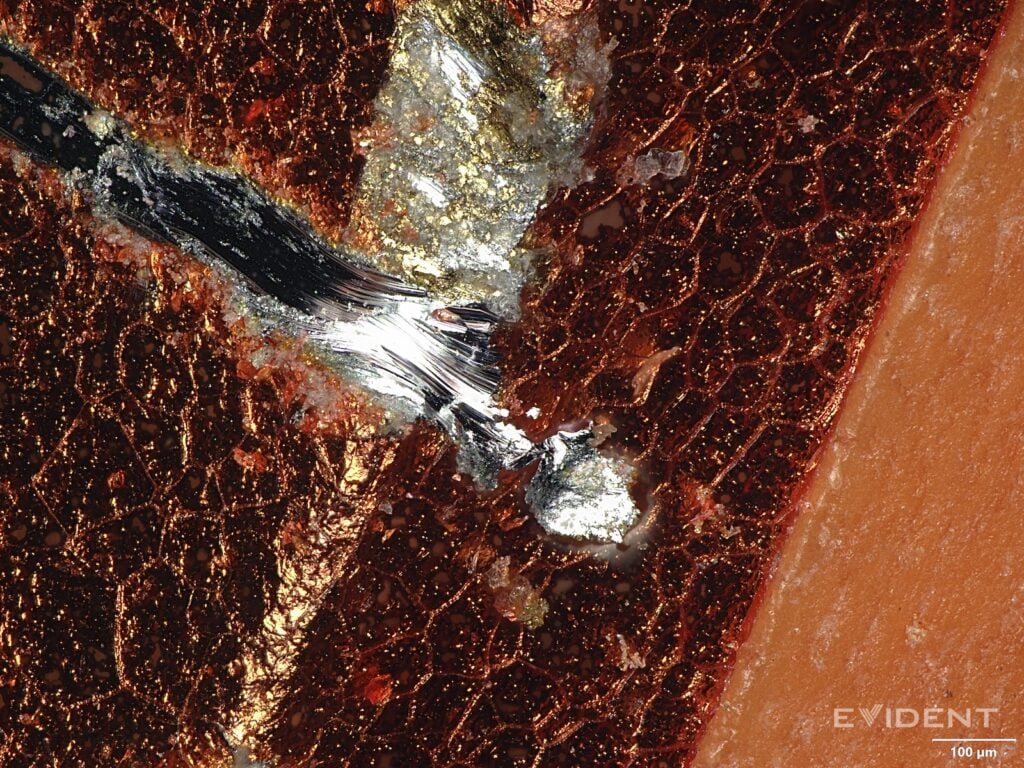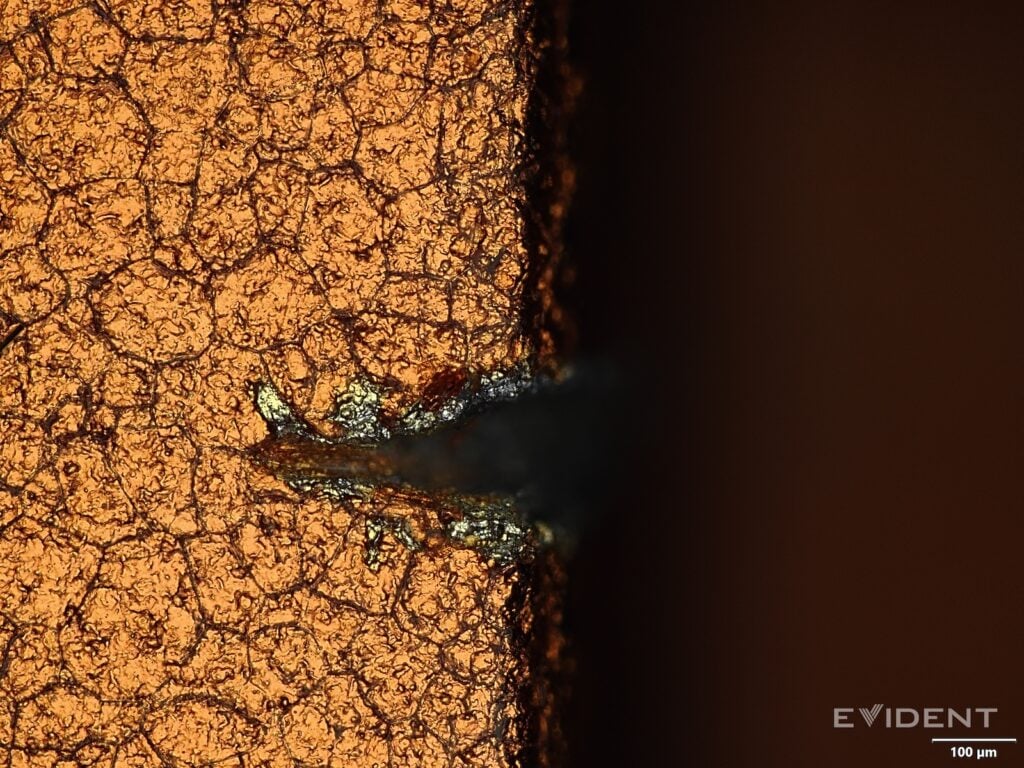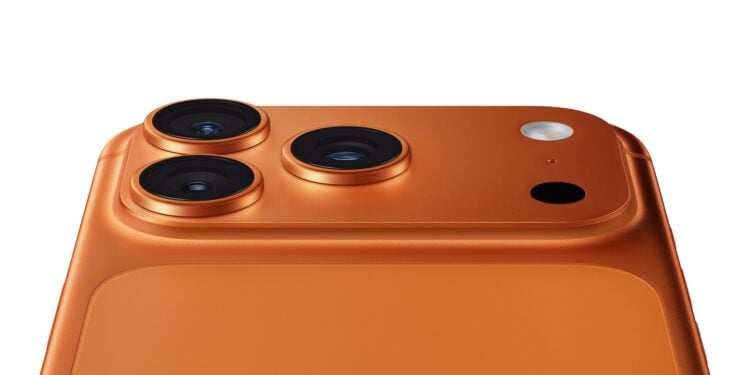With the iPhone 17 Pro, Apple is focusing on technological advancements—both inside and out. As with every new model, it's fascinating to see how the device is constructed, how repair-friendly it really is, and which hidden details only become apparent once opened. iFixit's teardown provides precisely these insights. Special focus: the new vapor chamber, an unexpected scratch issue, and the design surrounding the battery.
Following the iPhone Air, iFixit disassembled the iPhone 17 Pro and discovered interesting changes compared to previous generations. The analysis reveals a mix of progress and regression—especially in terms of repairability. The analysis sheds light on the cooling system, the internal structure, a potential material issue, and the current state of battery assembly. The result is a detailed look at a device that does many things new, but not everything better.
New interior layout with a focus on efficiency
The iPhone 17 Pro's internal components are primarily located beneath the camera module. The lower section is reserved for the battery, Taptic Engine, and USB-C port. This layout differs significantly from previous designs and demonstrates a clear separation of the components.

Steam chamber cooling under the microscope
A central element inside the iPhone 17 Pro is the new vapor chamber-based cooling system. The CT scan and the opened device show a copper structure with fine indentations and a metal mesh. A fluid circulates within this system, which evaporates when heated, absorbs heat, and then condenses again elsewhere. This physical process enables even heat distribution, which is particularly advantageous for performance-intensive applications such as gaming or video processing. Under the microscope, the vapor chamber appears as a complex component with a well-thought-out structure. The technology is similar to cooling systems used in high-performance notebooks.

No dual-entry design: repair via the front
Unlike previous iPhone models, the iPhone 17 Pro lacks the so-called dual-entry design. This means there's no glass back for direct access to components like the battery. Access is only possible from the front. This complicates repairs, as the display must be removed to access key components.
Battery: Removable, safer, but not perfect
A positive feature is that Apple has installed a removable battery tray. This is secured with Torx screws – a first for iPhones. The battery itself is still held in place with electrically removable adhesive, making removal easier. The metal casing makes the battery more robust and safer to handle than in previous models. Even though access is more difficult than with a rear entry, this detail offers a real practical advantage for maintenance.
Scratchgate: Scratch sensitivity is confirmed
Shortly after the iPhone 17 Pro launched, there were reports of scratched and dented devices. The camera bulge was particularly noticeable. iFixit addressed this issue and examined the casing under a microscope.

The results confirm the reports : The surface is more susceptible to damage in certain areas than expected. The problem lies in the anodizing. The coating adheres unevenly, particularly on the sharp edge of the camera recess. Contact with hard objects—such as a coin—can cause the anodized layer to chip off. This exposes the shiny aluminum underneath. Fine scratches and chipping are clearly visible under a microscope. This doesn't affect the entire back, but it's a visible problem in particularly exposed areas.

Repairability: 7 out of 10 points
Despite its one-sided accessibility, the iPhone 17 Pro receives a repairability rating of 7 out of 10 from iFixit. This rating is the same as the iPhone Air, despite the devices' different internal construction. The screw-in battery, the advanced adhesive, and the clear structure suggest moderate repairability. The fact that access is only possible from the front remains a disadvantage—especially for minor repairs or quick battery replacements.
iPhone 17 Pro: A well-thought-out interior with compromises
The teardown of the iPhone 17 Pro reveals a device that breaks new ground technically, but also makes compromises. The vapor chamber brings a modern cooling system to the iPhone, something previously only seen in the gaming sector. Repairability has improved in some areas, for example with the battery. At the same time, the lack of a dual-entry design complicates maintenance. The scratching problem ("scratchgate") is not an isolated incident, but technically understandable. Anyone using the iPhone 17 Pro without a protective case must expect visible signs of wear – especially around the camera frame. Overall, the iPhone 17 Pro presents a well-thought-out, but not perfect, internal picture. The improvements in the cooling system and battery are offset by setbacks in accessibility and material sensitivity. For those interested in technology, the teardown remains an insightful source for better assessing the device – especially beyond the pure marketing promises. (Image: Shutterstock / M. Sadoon)
- iPhones likely to soon be more open to smartwatches from other brands
- iPhone 17 Pro: How scratch-resistant is the new aluminum case?
- iOS 26.1 Beta 1: All new features at a glance
- iPhone Air and iPhone 17 Pro: Bend & Drop Test Comparison
- New content for Apple Arcade: Highlights in October 2025
- Apple is working on new security features for iOS 26
- Apple in focus: EU investigates App Store over fraudulent apps
- Apple invests in redwood forest restoration
- Apple celebrates reopening of Ginza Store in Tokyo
- FiDA Regulation: Germany wants to exclude Apple & Co.
- Apple expands Image Playground – what the beta version shows
- Apple develops MCP integration for AI agents in iOS & macOS
- iOS 26.1: Language update for Apple Intelligence and AirPods
- Wedbush raises price target: iPhone 17 gives Apple investors hope
- Apple announces new immersive content for Apple Vision Pro
- iPhone 17: Users report Wi-Fi outages





